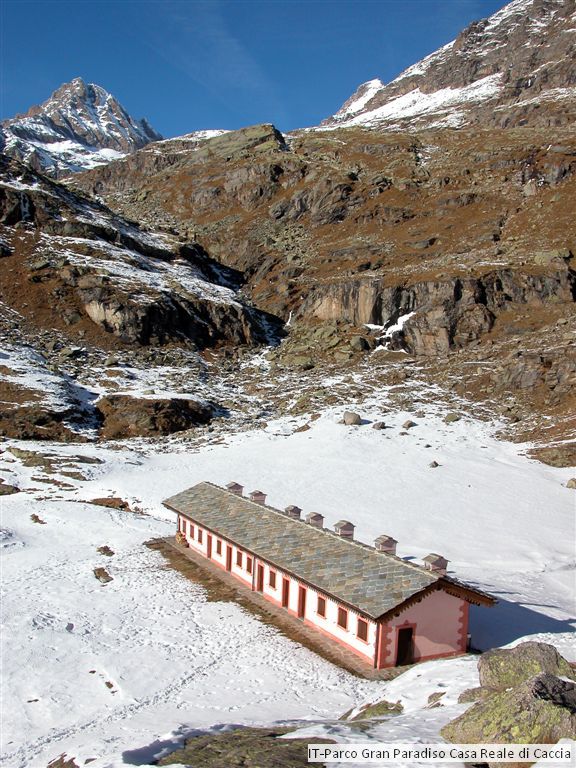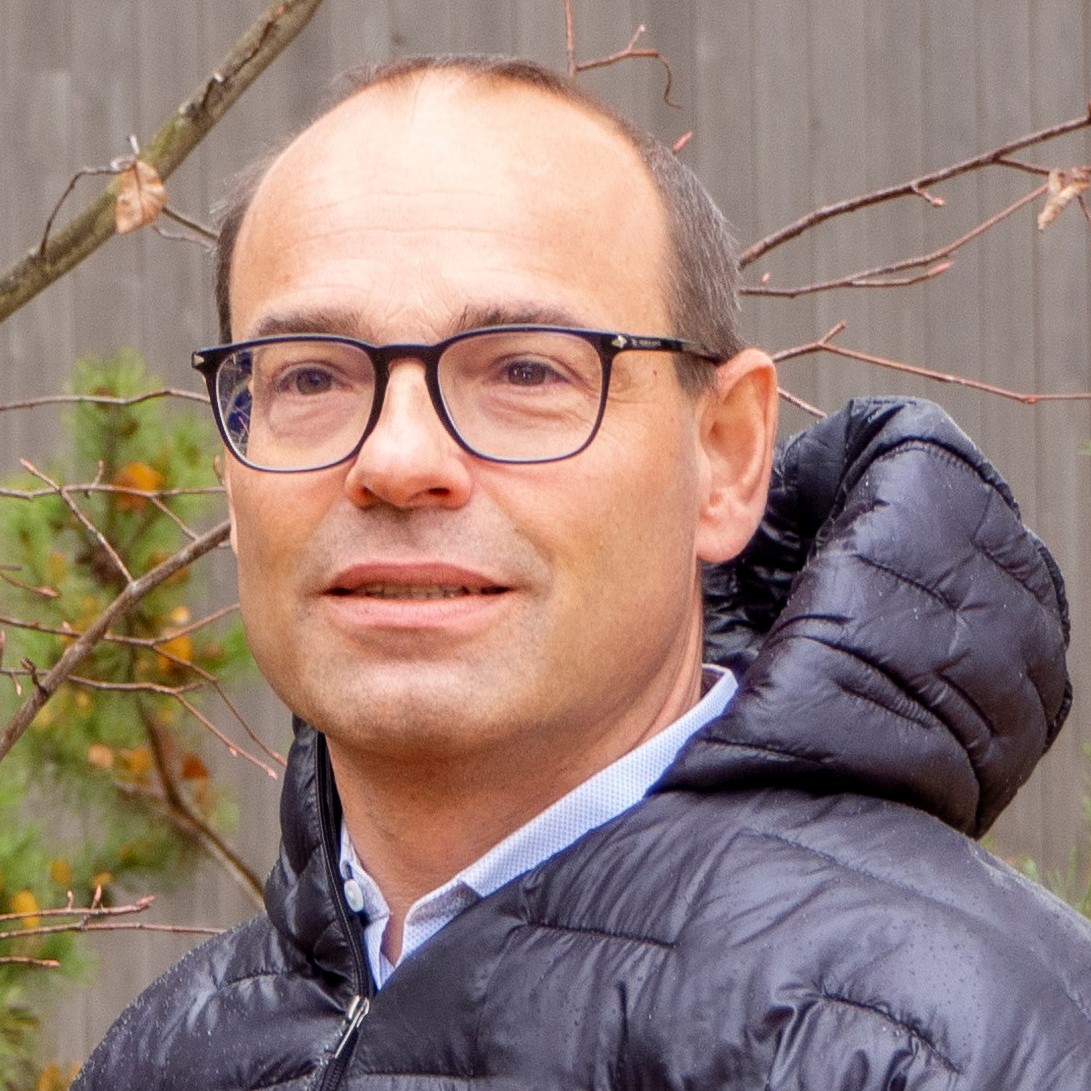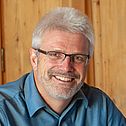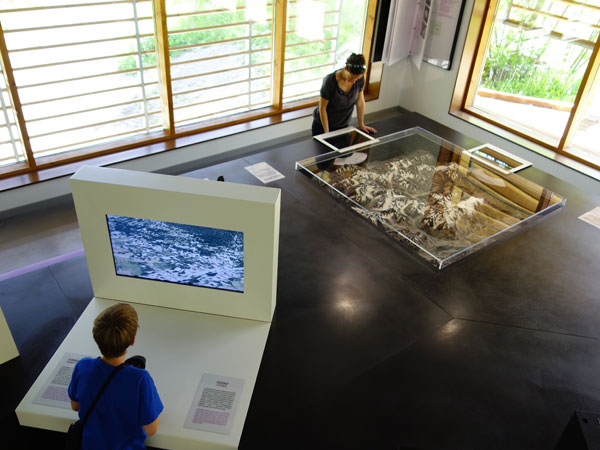will focus on valorization, use and management of Alpine resources from local to macroregional scale, regrading four main aspects: Alpine branding; the use of Alpine resources from past to present; the use of Alpine resources from present to future; and governance of Alpine resources. Finally, the use of local resources has to be discussed in the context of an Alpine macroregion. All these aspects will be deepened by workshops.
Organisation: ISCAR & Université of Milan / Val.te.mo
Support: Consiglio Nazionale dei Ministri, Regione Lombardia
Programme and registration: http://www.forumalpinum.org

From 10th to 11th September 2014, protected areas managers and scientists discussed the role of protected areas to document the climate changes on alpine biodiversity at the ALPARC international workshop at the Gran Paradiso National Park (IT) .
The visitor center of the Gran Paradiso National Park in the ancient Grand Hotel in Ceresole Reale was an imposing setting for the ALPARC Workshop, organized with the Gran Paradiso National Park on “Monitoring biodiversity transformation to document climate change impacts in alpine protected areas”. From 10th to 11th of September 2014 the Workshop brought together around thirty experts and scientists from the different alpine Countries.
The presentations clearly showed the importance and the broadness of the topic of biodiversity monitoring in regard to the process of climate change.
The examples presented in the indoor session, pictured well diversity of monitoring possibilities and methodologies: flora (ex. monitoring network for Caricion bicoloris atrofuscae) and fauna (ex. methods for bird monitoring in Bavarian Alps) but also lakes (Lacs sentinelles) and plant phenology (e-Pheno). Furthermore an historical excursus illustrated the use of historic records from the early alpine botanists to documents climate change impacts.
The speakers and discussion highlighted the need of international cooperation in the field of the climate change impacts and biodiversity. Protected areas play a particular role and can act as laboratories for this kind of research as they dispose of trained staff for observations and samplings, good infrastructure to facilitate the monitoring duty and a long term visibility for the monitoring plots.
The outdoor session was the occasion for a demonstration of the monitoring protocol developed by various Italian parks and scientists to monitor animal biodiversity in mountain ecosystems. The Gran Paradiso National Park Rangers made this event memorable not only because of the scientific and technical quality of this field excursion but also thanks to their extraordinary polenta served in the spectacular setting of the ancient hunting cabin of King Victor Emmanuel II.
Below the PowerPoint presentations shown during the Workshop « Monitoring biodiversity transformation to document climate change impacts in alpine protected areas”.
Please note that the presentation of Sonja Wipf is not online. If you are interested in the presentation, please contact directly the author at : sonja.wipf (at) slf.ch
REGISTRATION NOW OPEN!
The ALPARC Workshop “Monitoring biodiversity transformation to document climate change impacts in alpine protected areas” will take place in the Gran Paradiso National Park (Italy) the 10th and 11th of September 2014.

Target public: Staff in charge of biodiversity conservation management and monitoring in the Alpine protected areas.
Language of the meeting: English
Programme: The aim of this workshop is to present and discuss different monitoring protocols to assess changes of biodiversity in alpine ecosystems linked to global warming effects in order to identify possible synergies for a closer cooperation and exchange of information among alpine protected areas.
Among other, the Italian biodiversity monitoring programme used in the Gran Paradiso National Park will be presented and its application demonstrated during a field trip.
REGISTRATION IS OPEN:
Please find below the registration form and practical information for download. Send back your registration form to ALPARC before August, 27th.
Contact: yann.kohler[at]alparc.org +33 (0)4 79 26 55 07

At the international Museum "Micheletti Award" a great success was reached for the new National Park Centre less than a year after its opening: 3rd place for the "Haus der Berge"! Its boss Ulrich Brendel (r.) received the award at the Riverside Museum in Glasgow / Scotland by the chairman of the international jury, Dr. Charles Borromeo Murr (2nd from left).
The first prize went to the Science Museum "MUSE" (Museo delle Scienze) in the Italian town of Trento. The "Micheletti Award" is an award for innovative and contemporary exhibitions and museums in Europe and is awarded annually by an independent commission.
Source: Press release of the National Park Berchtesgaden on 12/05/2014
Credit (Credit: National Park Berchtesgaden) awards Micheletti Award.jpg

Das UNESCO-Welterbe Schweizer Alpen Jungfrau-Aletsch hat bereits ab dem 18. Jahrhundert die Menschen in der Region und Gäste aus aller Welt inspiriert.
Mit der Welterbe-Woche vom 30. September bis 04. Oktober 2014 wollen wir die Schönheit der Natur und deren Einfluss auf die Menschheit in den Fokus stellen. Bei vier geführten Exkursionen in die Welterbe-Region und dem Welterbe-Treff erleben Sie die grossartige Natur und erfahren von Experten, wie die Natur früher und heute das Handeln des Menschen beeinflusst.
Die gesamte Bevölkerung ist dazu herzlich eingeladen. Machen Sie mit und lassen Sie sich inspirieren!
Alle Informationen finden Sie hier
The Board is one of ALPARC’s executive bodies. It is responsible for the administration and financial management of the ALPARC coordination unit and is chaired by a President, two vice presidents, a treasurer and a general secretary. Board members are elected every four years by the ALPARC Council.
|
|
President Peter Oggier Director of the Pfyn-Finges Nature Park Switzerland |
||
|
|
Vice-President Christian Schwoehrer Director of ASTERS, Conservatoire d’espaces naturels de Haute-Savoie France |
||
|
|
Vice-President Andrea Beltrame President of the Prealpi Giulie Nature Park Italy |
||
|
|
General Secretary Roland Baier Director of Berchtesgaden National Park Germany |
||
|
|
Treasurer Barbara Pucker Director of the Hohe Tauern/Kärnten National Park Austria |
The ALPARC Council defines the main missions and actions of the association on an intra-regional level. To represent the diversity of the region, the Council is made up of Alpine Protected Area managers from the Alpine countries. Council members represent the interests and priorities of protected areas and are actively involved in decision-making processes.
|
|
President Peter Oggier Director of the Pfyn-Finges Nature Park Switzerland |
|
Vice-President Christian Schwoehrer Director of ASTERS, Conservatoire d’espaces naturels de Haute-Savoie France |
|
Vice-President Andrea Beltrame President of the Prealpi Giulie Nature Park Italy |
|
|
General Secretary Roland Baier Director of National Park Berchtesgaden Germany |
|
Treasurer Barbara Pucker Director of the Hohe Tauern/Kärnten National Park Austria |
||
|
|
Julia Friedlmayer Director of the Network of Austrian Nature Parks Austria |
|
Josef Forstinger Director of the Kalkalpen National Park Austria |
|
|
|
|
Ludovic Schultz Director of Les Ecrins National Park France |
 |
Olivier Putot Director of the Vercors Regional Natural Park France |
 |
Xavier Eudes Director of the Vanoise National Park France |
 |
Luigi Spadone Director of the Val Grande National Park Italy |
|
Astrid Wiedenhofer South Tyrolian Nature Parks Italy |
|
Daniele Stellin Mont Avic Nature Park Italy |
 |
Anna Weber Head of Forest and Landscape Department Office for the Environment Principality of Liechtenstein |
|
Astrid Claudel Rusin Head of Sustainable Development Division Environment Department Principality of Monaco |
||
|
|
Dominique Weissen Director of the Swiss Parks Network Switzerland
|
 |
Ruedi Haller Director of the Swiss National Park Switzerland |
 |
Tit Potočnik Triglav National Park Slovenia |
Roselyne Anselmet died Saturday 23th of August falling from a rock during her work on the fauna census.
Since 1982, Roselyne was a ranger of the Vanoise National Park (France) and she used to work in the village of Bonneval-sur-Arc. Roselyne has been one of the first women taking part in the park ranger team.
It is the fourth death for work of a park ranger in the Vanoise in fifty years.
The protected area community, ALPARC’s team and members and all the alpine rangers are deeply touch by the tragic death of Roselyne Anselmet.
During the 2015 edition of the “Danilo Re Memorial”, Roselyne Anselmet will be honored with a special celebration.
Source : read the article and the Vanoise National Park press release, in French
“CLIMATE CHANGE IN THE ALPS – impacts, strategies and people’s initiatives”
Witness the effects of climatic changes in the Alps, demonstrate your personal concern, illustrate the response strategies implemented in your region, or take it with humor and win prizes!
Participate in the 2014 edition of the Photo-contest of the Alpine Convention and help us to show the reality of climate change in the Alps. 2015 is a crucial year for our climate with the 21st World Climate Conference expected to bring about a new global deal to follow the Kyoto Protocol.
For participation you have to agree with the terms and conditions and upload your photo on this link. The 12 best picture will be printed in the 2015 calendar of the Permanent Secretariat of the Alpine Convention and will be in the selection for the future photo exhibitions.
Together with 3 copies of the calendar the winners of the photo-contest will also receive one of these prices.
Source of information: Alpine Convention
Two new visitor centres have just opened their doors : the entirely renovated Maison du Parc national des Ecrins (FR) in Vallouise, and the Champorcher Visitor Centre in the Mont Avic Nature Park (IT).
The new Champorcher Visitor Centre in the Mont Avic Nature Park (Italy)
This new visitor centre was inaugurated on 1st August 2014 in the “Villa Biamonti” , a former early 20th century tourist centre which has now been entirely renovated. It contains a totally interactive exhibition where the geological and biological aspects of mountain habitats are shown.
During the inauguration, a new 1:25.000 scale map of the park was presented and a new application for Smartphone: the “Parco Mont Avic” APP was launched. With the Mont Avic “App” visitors have on their Smartphone a guide to the hikes in the park and all the useful information about refuges. The application can be downloaded for free for iPhone and Android.
For more information visit this page: www.montavic.it 
The new Maison du Parc national des Ecrins in Vallouise (France)
In an entirely renovated building, with a totally revamped layout, the new Maison du Parc de Vallouise opened its doors on 4th June 2014.

The new building was officially inaugurated on 5th July by Ségolène Royal, the minister of Ecology, Sustainable Development and Energy. The Minister defined the new house as “remarkable and exemplary”.
The park can be explored on 3 large “floors”: the Durance valley, the mountain pastures and forests, and, finally, the peaks and glaciers. The exhibition is made up of sound tales, games, interactive parts, multimedia, tactile models, more traditional panels… so many complementary media that will let visitors discover and share in the heritage of the valley. A layout with every member of the public in mind : families, children and with accessibility for the four types of disability.
For more information visit this page: www.ecrins-parcnational.fr 
To find out about the other visitor centres of the Alpine Protected Areas, visit the dedicated page ALPARC!
ALPARC wishes Happy Birthday to theSwiss National Park (SNP) who celebrates its centenary. Founded on 1st August 1914, the pioneers created a unique wilderness oasis where the natural development occurs without human influence. In the oldest national park of the Alps, this remarkable nature experiment has been scientifically observed and documented for hundred years.
In occasion of the Swiss National Park's Birthday, ALPARC offers new postcards "special centenary".
A colourful bouquet of anniversary projects provides a multi-facetted insight into a century of wilderness development.
The events:
Working towards a common goal: the SNP creates “Wilderness” with an exhibition tour in 16 large shopping centres in the entire country.
“LAINA VIVA – the legendary creation of the Swiss national park” An open-air theatre created especially to celebrate the Swiss National Park’s 100th anniversary will show on stage during all the summer.
National park ON TOUR :An interactive exhibition with 30 animated origami-style animals.
100 years Swiss National Park: LA FESTA: The 1st August 2014 is the 100th anniversary of the Swiss National Park’s foundation. In Zernez, a full programme for young and old, commencing at 10:00 with a children’s concert, and finishing with a big birthday party in the festival marquee. At the main ceremony, Federal Councillor Doris Leuthard, will deliver birthday greetings from the Confederation.
In September, the SNP will add a West-Swiss note at the “Comptoir Suisse” in Lausanne, and the National Park Centre in Zernez will show an anniversary exhibition in 2014 about people who have shaped the SNP in the past and today.
Finally, various publications, such as the new atlas, complement the programme.
More information:
www.nationalpark.ch/jubiläum
www.facebook.com/schweiz.nationalpark
The competition «FOTOGRAFARE IL PARCO» (Take a picture of the Park) is open.
Arrived at the 10th edition, the international competition is organized by the Stelvio National Park (IT), the Gran Paradiso National Park (IT) , Abruzzo, Latinum and Molise National Park (IT) and by the French National Park Vanoise in collaboration with Swaroski Optik Italia.
Photographs,experts and passionate, send your pictures until the 1st December 2014! The competition is free.
Further information at the official new web site. There you can download the program, the registration form and you have practical information.
From the official web site you can register online for the competition.
For further information please contact:
Consorzio del Parco Nazionale dello Stelvio Parc National de la Vanoise
Tel. +39 0342900811 Tel. 0033-0479628964
e-mail: stelviopark@fotografareilparco.it e-mail : pn.vanoise@fotografareilparco.it
Ente Parco Nazionale Gran Paradiso
Tel. 0118606211
e-mail: pngp@fotografareilparco.it
Ente Parco Nazionale d’Abruzzo, Lazio e Molise
Tel. 08639113220
e-mail: parcoabruzzo@fotografareilparco.it
Swarovski Optik Italia srl
Tel. +39 0458349069
e-mail: info@swarovskioptik.it

Natura 2000 protects areas of high biodiversity value across the European Union. It is the largest coordinated multi-national network of protected areas in the world, covering more than 18% of the European terrestrial territory of the Member States as well as significant marine areas.
As establishment of Natura 2000 nears completion the focus is increasingly shifting to the effective management and restoration of sites in the network. Ensuring a fully functional Natura 2000 network is central to achieving the EU target of halting and reversing the loss of biodiversity and ecosystem services in the EU by 2020.
The EU Natura 2000 network is generally not a network of strictly protected areas in which no economic activities should take place. Therefore in most Natura 2000 sites, a wilderness approach will not be the most appropriate form of management. However, in specific cases, a wilderness approach can be the most appropriate or even necessary management approach for those specific Natura 2000 sites hosting habitat types and species of Community interest whose maintenance or restoration to a favourable conservation status is dependent on some degree of wilderness qualities and natural processes. And there will be sites for which a wilderness approach can be useful but not necessarily the only way to restore or maintain the species and habitats at a favourable conservation status. This guidance document is applicable to those specific Natura 2000 sites.
Download the EU Guidelines on wilderness and wild areas in Natura 2000
Source: EU Commission "Guidelines on wilderness and wild areas in Natura 2000"